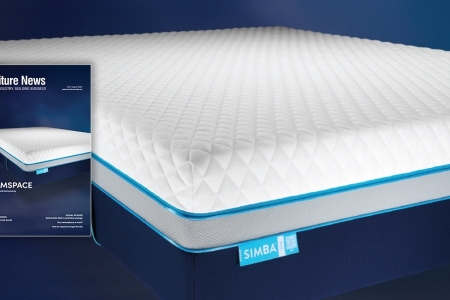In the first of a series of columns aimed at helping furniture independents and SMEs become more competitive, retail expert and high street advocate Clare Bailey, founder of The Retail Champion, explains how smaller businesses can make the supply chain work for them, rather than vice versa …
If you’re still relying on the same long, fragile supply chains you did five years ago, stop. Wake up. Disruption isn’t the exception any more – it’s baked in. The question isn’t if your next container will be delayed, it’s when.
War in Ukraine, attacks in the Red Sea, volatile fuel prices, and rising US-China tariffs are all pushing costs and lead times up, while your customers’ patience shrinks. Every new geopolitical tremor sends shipping rates rocketing. Insurance premiums jump, rerouted vessels take longer, and small businesses like yours get stuck at the back of the queue. Meanwhile your competitors, the big chains and online giants, have the money and leverage to jump the line. If you can’t deliver, they will.
Independent retailers can’t afford to shrug this off. You don’t have the buying power to absorb endless extra costs, or magic new stock out of thin air when a shipment’s stuck off Gibraltar. Your only edge is agility – so use it.
First, get serious about nearshoring and reshoring. Yes, a British-made range might dent your margin by a few points compared to importing cheap containers from Asia. But what’s the true cost of ‘cheap’ if you can’t get it on the shop floor for six months? Closer-to-home production means more reliable lead times, lower carbon miles, and a growing competitive story your customers want to hear.
In furniture, that could mean working with regional makers or British workshops – even if it’s just part of your range, it buys you time and resilience.
Next, stop treating your suppliers like order-takers, and start treating them like partners. Build real relationships. Collaborate. If you can’t fill a container alone, find other independents in your network and co-load. Share routes, storage or even warehousing, if it keeps shelves full and costs down. Push for packaging that cuts waste – not only will it save money, it’ll appeal to shoppers who want less landfill with their new sofa.
Don’t keep this behind the scenes. If your supply chain is greener, shorter and more transparent than your rivals’, make it part of your sales story. Today’s shoppers want sustainability, but they want certainty more.
If you can’t undercut the chains on price, compete on trust. Show them how buying from you means they know exactly where that table’s from, when it’ll arrive, and what it took to get there. Put QR codes on product tags that reveal the journey from workshop to warehouse to their front door. Share behind-the-scenes content. Offer honest lead times and stick to them. Reliability builds loyalty, and loyalty builds margin.
Finally, tighten up what you stock and how you stock it. Be brutal – know what sells, when it sells, and don’t let sentimental ranges hoard your cash flow. A container stuck at sea is useless, but so is a dusty corner of your storeroom stacked with slow movers that drain working capital. Hold your assortment accountable. Keep it lean but responsive, ready to flex with customer demand.
The bottom line is that disruption is the new normal. Blaming it won’t pay the bills, but outsmarting it will. Build a supply chain that earns trust and keeps promises. Cut the excuses. Get creative. Get local where you can. Share your story so your customers believe it and stick with you when prices go up.
Flexibility beats cheapness every time. Stay stocked. Stay honest. Deliver what you promise, or someone else will.









